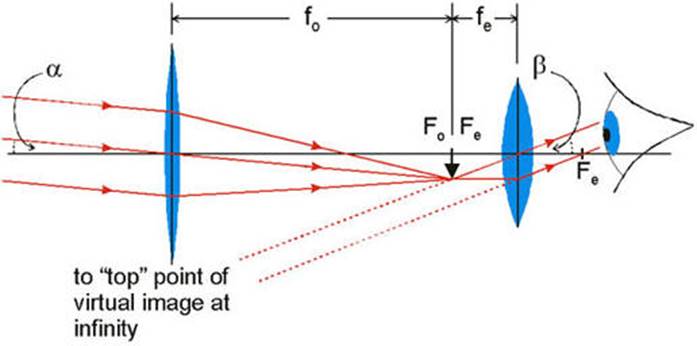An astronomical refractive telescope has an objective of focal length 20m and an eyepiece of focal length 2cm.
The ray diagram of a refracting telescope is shown below.

Source: Wikimedia commons
Note that feand foare the focal lengths of the objective and the eyepiece respectively. Also, note that the lens on the left is the objective and the one of the right is the eyepiece.
Option (a):
We can see from the diagram that the length of the tube is given by:
![]()
![]()
Hence, option (a) is correct.
Option (b):
The magnification of a refracting telescope is given by:
![]()
![]()
Hence, option (b) is correct.
Option (c):
A refracting telescopes forms an inverted image as it can be seen from the ray diagram. Light emanating from far away objects (e.g. stars) pass through the objective and converge at the second focus of the objective which is also the first focus of the eyepiece. The image formed is inverted and real. Now taking this real image as the object, we get a virtual image far away formed by the eyepiece. As virtual images have the same vertical orientation as the object, the image formed is inverted. Hence, option (c) is correct.
Option (d):
Changing the aperture of the lens has no effect on chromatic aberration. Hence, (d) is incorrect.